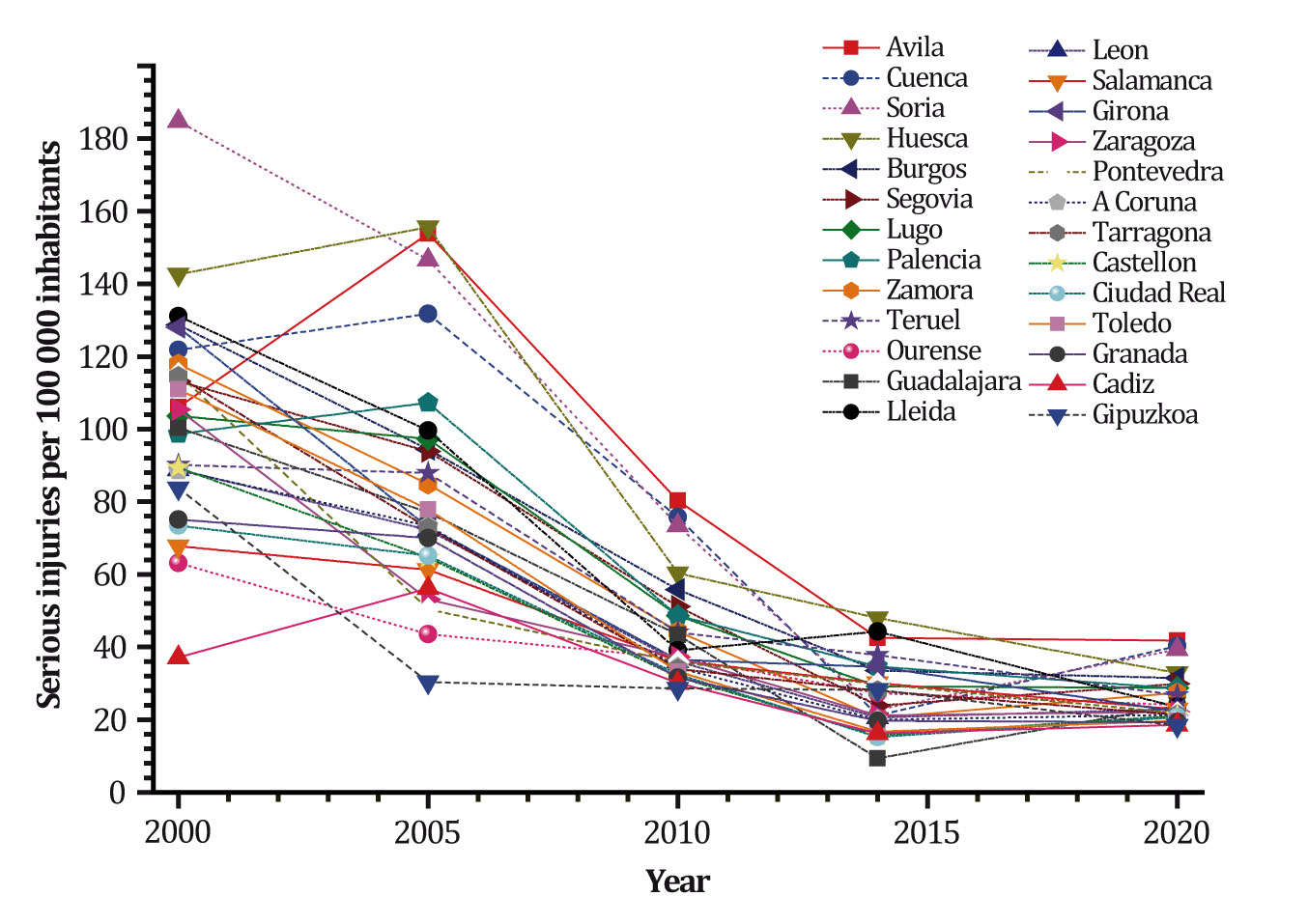Proposal for severe injury reduction targets in Spain by territory and sector. The importance for rural areas of traffic accident
Keywords:
Spanish road safety policy, safety indicators, non-linear distribution method for reduction targets, national comparisons, SpainAbstract
The Spanish road safety strategy for 2011-2020 proposes a 35% reduction in the number of severe injuries in 2011-2020. In this context, this article analyses provincial traffic accident rates in Spain by type of road and applies a nonlinear distribution methodology to dynamic severe injuries reduction targets for 2011-2020 for the purpose of setting accident rate targets in each of the Spanish provinces. Targets were weighted considering 2010 as the base year. This resulted in proposals for reducing the number of severe injuries in each province by type of road as a function of the starting situation of the indicators used in the study. In general, higher reduction must be made on highway and other type of roads (including city streets), and provinces with low population density (rural areas) such as Avila, Cuenca and Soria. The results found seek to provide policymakers with a more local view for achieving the overall Spanish traffic safety policy target, mainly for rural areas.

Downloads
Published
Issue
Section
License
Aquellos autores/as que tengan publicaciones con esta revista, aceptan las Políticas Editoriales.


